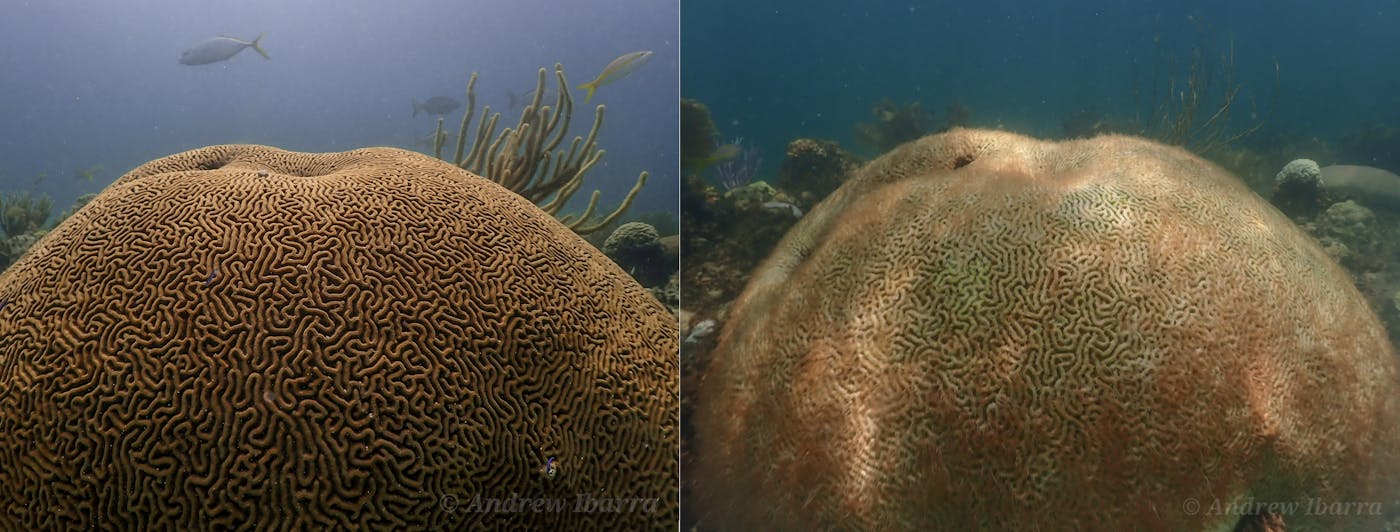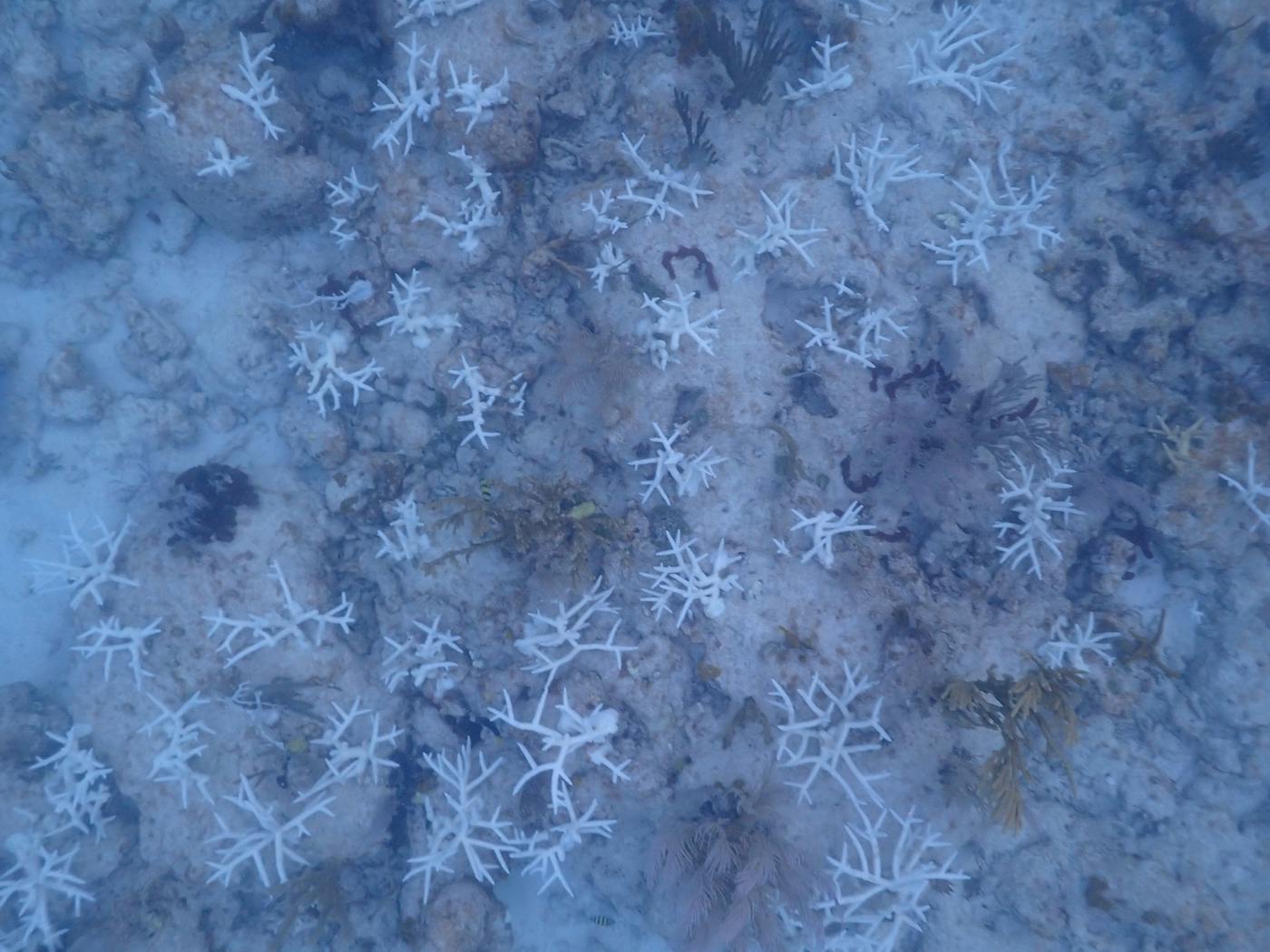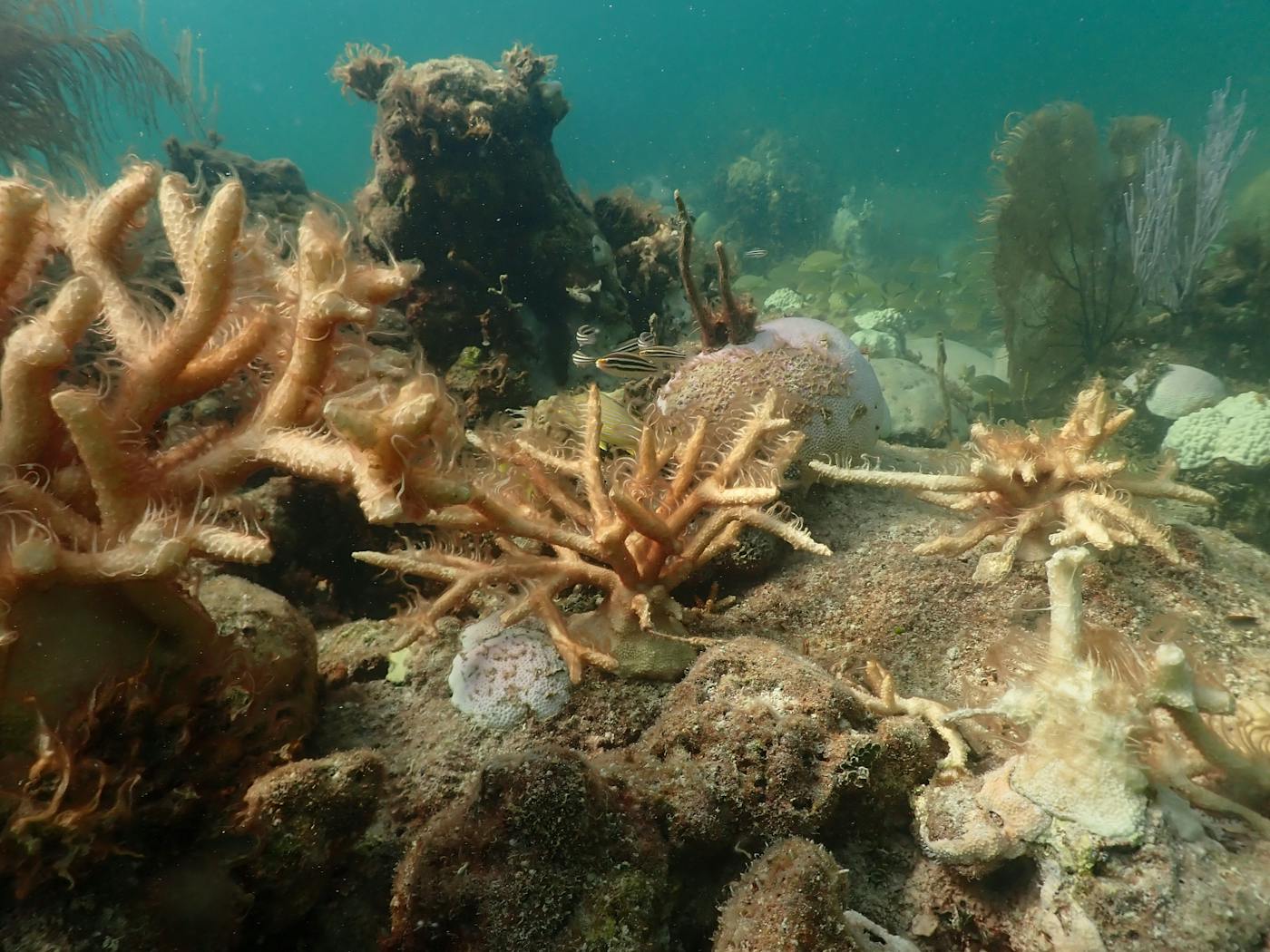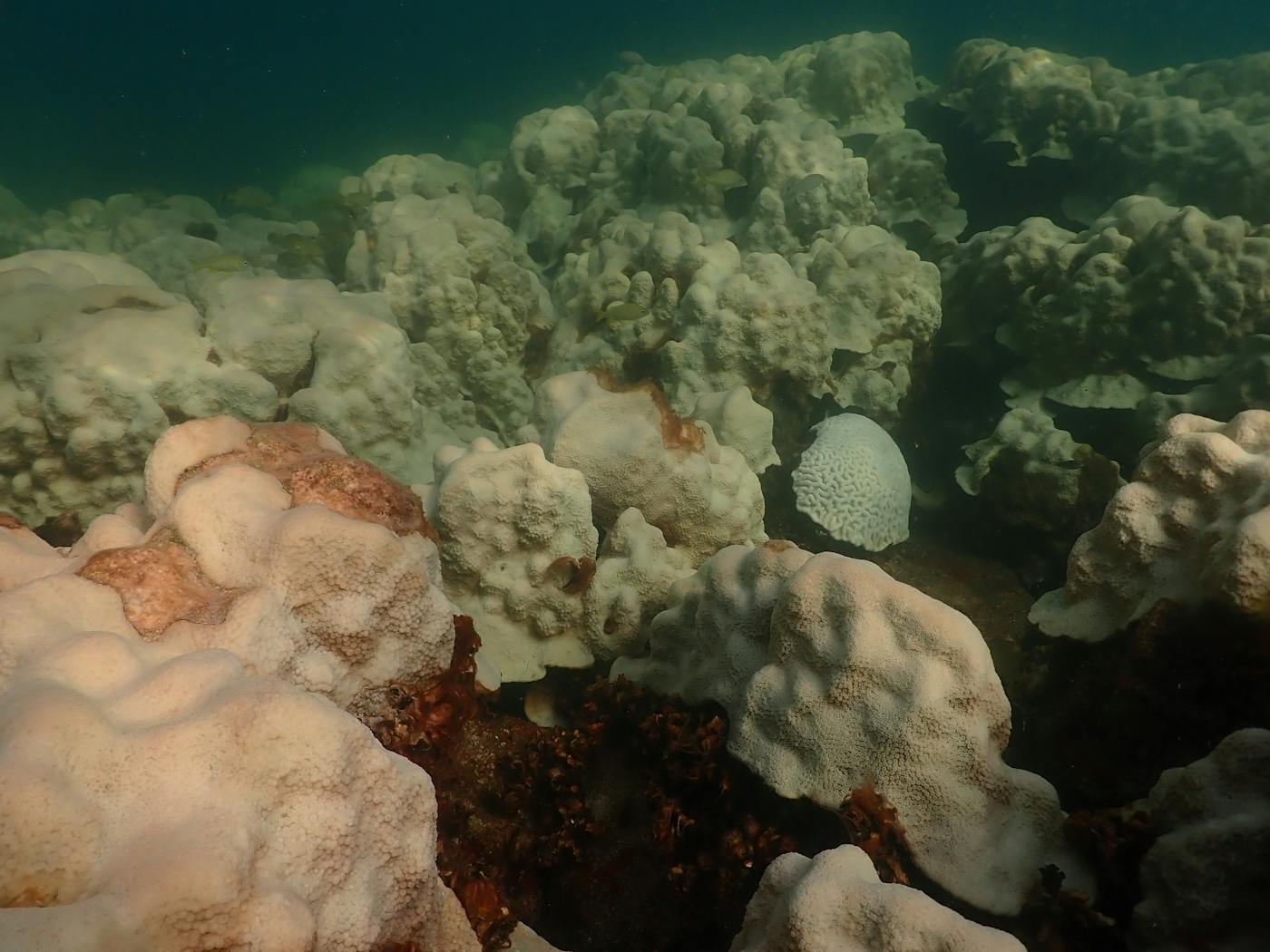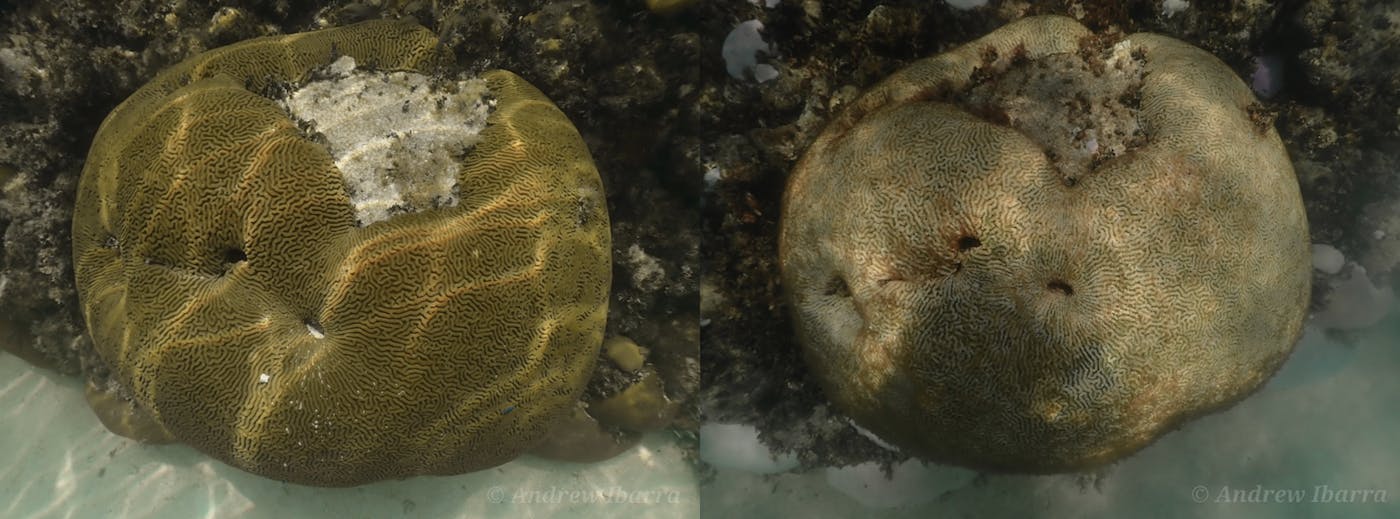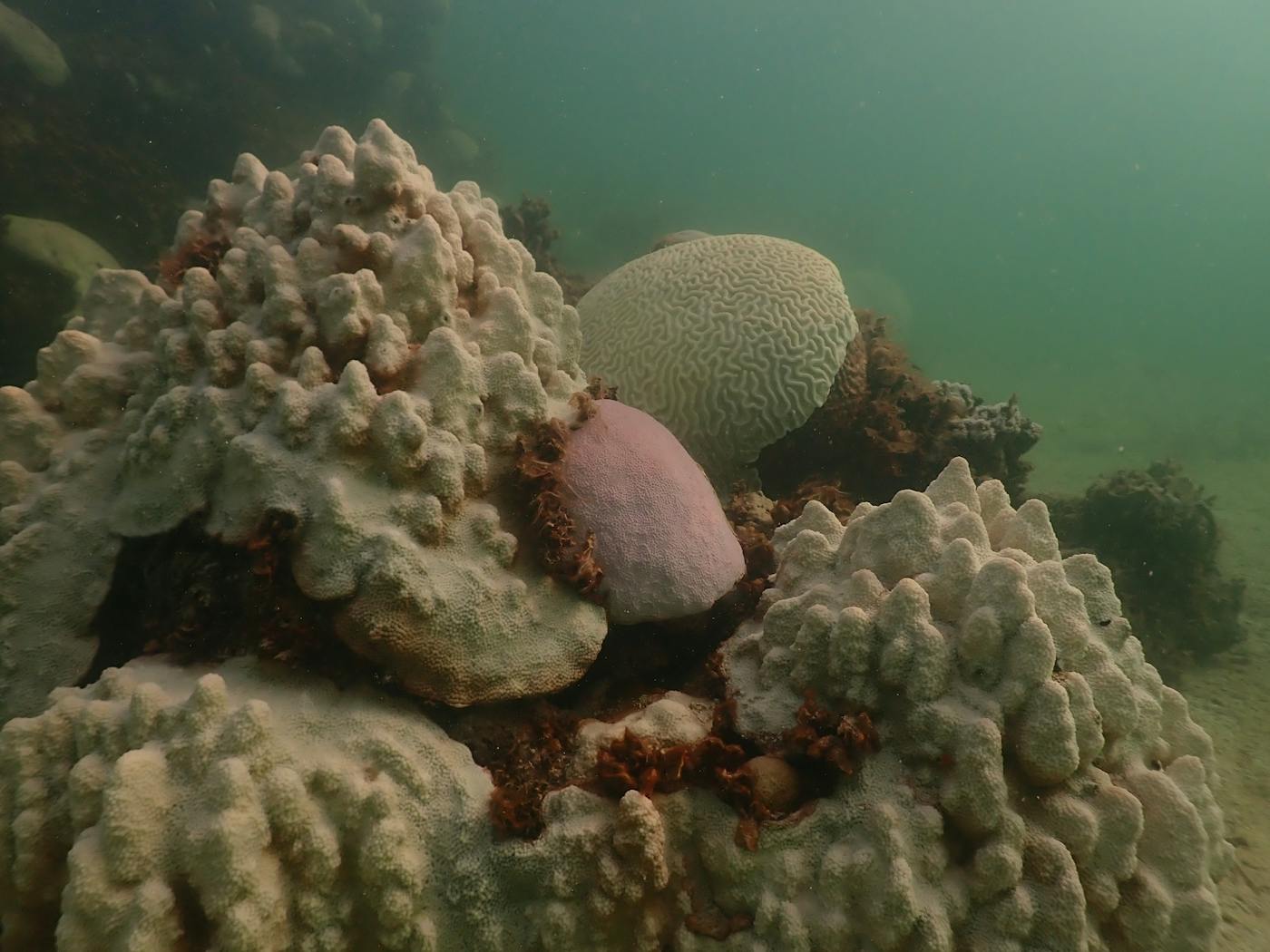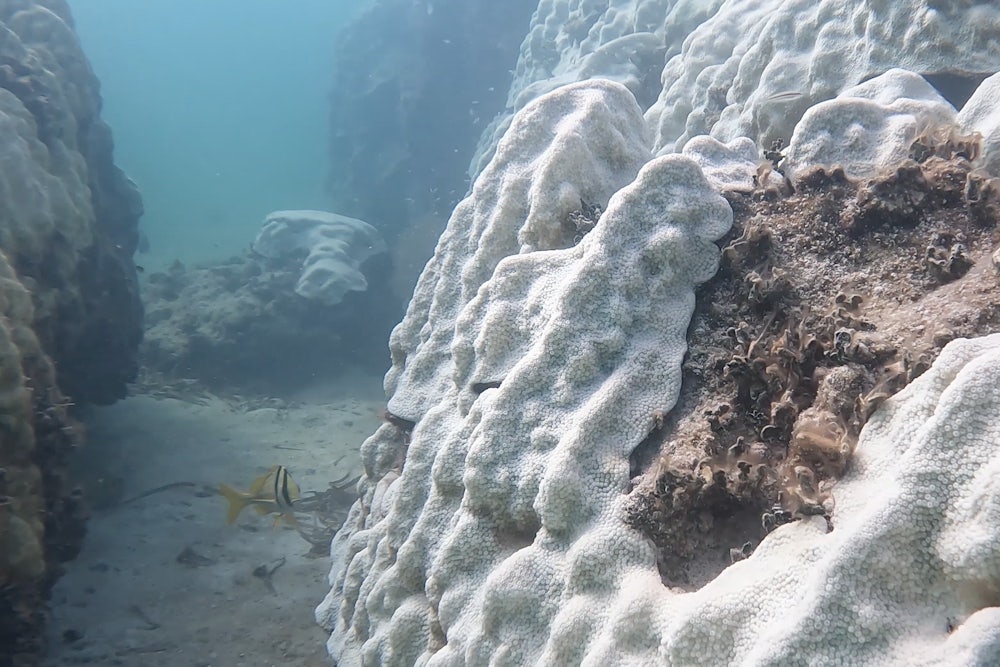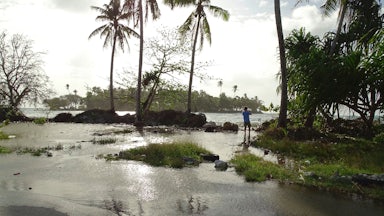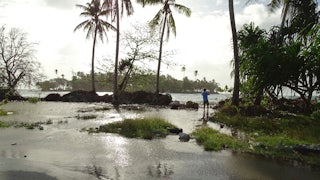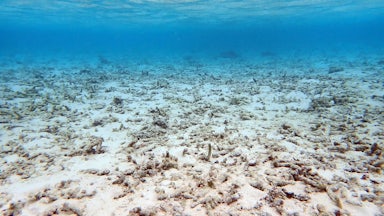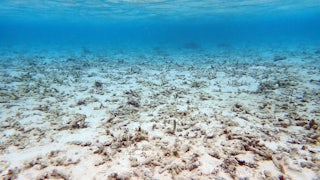As temperatures soared in the Florida Keys last week, Andrew Ibarra took his kayak out into the ocean, dived into the water, and started taking pictures in the Cheeca Rocks Sanctuary Preservation Area. Ibarra works as a marine stewardship and monitoring specialist for the National Oceanic and Atmospheric Administration, or NOAA, where he’s part of a team that tracks seven reefs stretched across hundreds of miles.
What he found in the normally colorful reef shocked him. “It was a field of white,” Ibarra told me. In the moment, underwater, he reacted so audibly through his diving gear that tourists around him started to get concerned, seemingly unaware of what exactly was so disturbing about the scene before them. Just a week before, Ibarra said, many of those same corals had been teeming with life.
Coral reefs’ iconic, psychedelic colors are owed to algae that take up residence inside them and photosynthesize sunlight into oxygen and nutrients. That symbiotic process allows corals to keep expanding, providing a calcium carbonate habitat for fish, sea sponges, and other ocean dwellers. But when corals are under stress—often due to abnormally high temperatures—they expel their algae, leaving stark white structures like the ones Ibarra saw last week.
“Corals are the builders,” Ibarra explained. “They build the house for things to live in.” As waters off the coast of the Sunshine State have started to feel as hot as bathtubs, those houses have been threatened. Water temperatures on Ibarra’s dive computer read 89 or 90 degrees for the five hours he was on the water. (While these temperatures are abnormally high, Ibarra noted that his readings could be two degrees off in either direction.)
Bleaching isn’t dying, Ibarra said. “When corals bleach, they are starving,” he told me. They can stay bleached for several weeks before dying, wasting away without oxygen to maintain and expand their hard structures. If the stressor goes away—if temperatures drop—the corals can repopulate.
Bleaching usually happens more gradually; reefs off the Keys have experienced partial bleaching (“paling”) annually for the last five years. What’s alarming about this year’s bleaching event is how quickly corals not only bleached but died, apparently from heat stress.
“Typically, dying occurs when they stay bleached for a few weeks,” Ibarra said. “If things don’t get better, they die. These corals bleached and died before anyone even saw them bleach. It’s very, very unusual.”
One in four animals in the ocean depend on coral reefs for their survival. Those of us on land benefit from the barrier they provide against erosion, breaking up waves that would otherwise eat away at coastlines. Coral reefs are also a major draw for visitors, eager to dive in to see them for themselves and catch the fish that benefit from the ocean ecosystems they nourish. In Monroe County—where the Florida Keys are located—recreation and tourism account for between 33 and 75 percent of economic activity. Putting a price on coral reefs is an imprecise science, but the World Wildlife Fund estimates that the biodiversity, fisheries, and coastal protection that healthy reefs globally provide account for nearly $30 billion a year in economic impact.
Much of Ibarra’s work is monitoring large-scale coral reef restoration projects, in partnership with organizations that specialize in coral “out-planting.” Researchers are also looking to identify species of coral that are better able to survive high temperatures, so as to better target restoration efforts. Ibarra also said that the reefs in the pictures he took last week are all in relatively shallow waters—those that get the hottest. Corals further down are much better protected against the extreme temperatures seen this past month.
“We’re not there yet,” Ibarra said when asked about the possibility of coral reefs reaching a tipping point. Still, he said he worries about the future. “How many more catastrophic, unprecedented events is it going to take for us to completely lose the ecosystem?”
The weekend after the photos were taken, Ibarra returned to the Cheeca Rocks preservation. The water was 86 degrees, he said, four degrees lower than the week before after a few days of rain. Most of the corals he photographed were still bleached. Some had regained a bit of color, meaning some algae had returned, while others had died.
Ibarra cautioned against counting the coral out. “All hope is not lost,” he emphasized. While he said the bleaching is “catastrophic and unprecedented,” he told me it’s “important to know that it’s not the end of coral reefs. These ecosystems are geologic formations that have been around for millions and billions of years. They’ve survived several mass extinction events, even before humans were around. Yeah, this really sucks. But we’re not going to lose all our coral.”
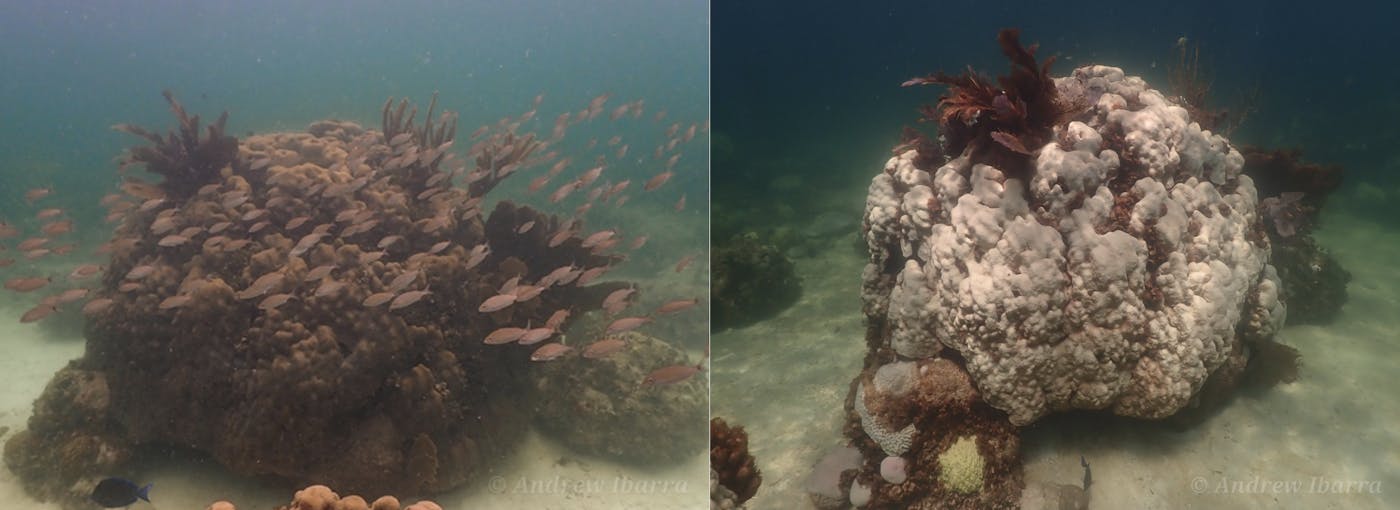
Most of the coral seen in this video is the slow-growing Mountainous Star Coral (Orbicella faveolata), on the patch of reef that is just outside of the Cheeca Rocks Sanctuary Preservation Area. “Given their size, I think it’s safe to say they are centuries old,” Ibarra told TNR.
